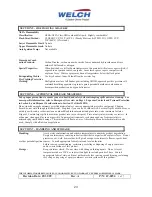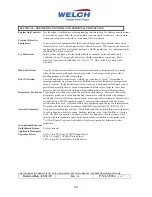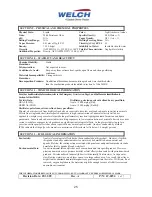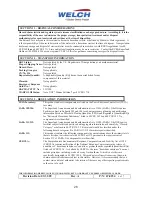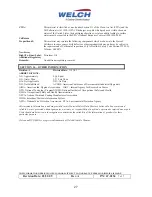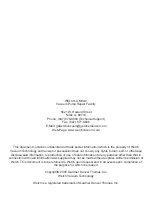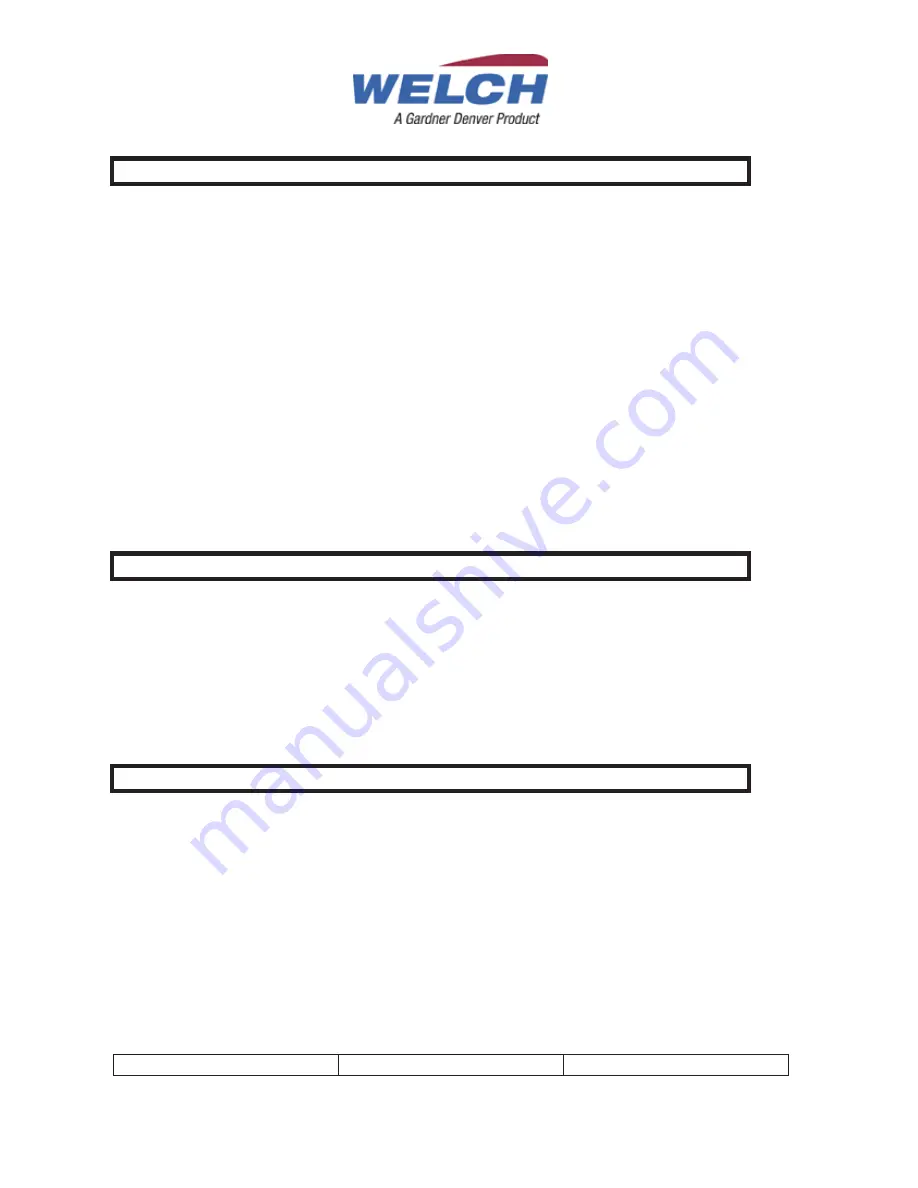
23
THE INFORMATION HEREIN IS GIVEN IN GOOD FAITH, BUT NO WARRANTY, EXPRESS OR IMPLIES, IS MADE.
Revision Date: 03/31/09
Rev. A
P/N: 67-0254
3 of 7
SECTION 5 -
FIRE FIGHTING MEASURES
NFPA Flammability
Classification:
OSHA/NFPA Class-IIIB combustible liquid. Slightly combustible!
Flash Point/Method:
CLOSED CUP: 210°C(410°F). (Pensky-Martens (ASTM D-93)) OPEN CUP:
238°(460°F) (Cleveland.).
Lower Flammable Limit:
No data
Upper Flammable Limit:
No data
Auto-Ignition Temp.:
Not available
Hazardous Comb
ustion Products:
Carbon Dioxide, carbon monoxide, smoke fumes, unburned hydrocarbons and trace
oxides of Sulfur and/or nitrogen.
Special Properties:
When heated above its flash point temperature, this material will release vapors which, if
exposed to an ignition source, can ignite. In enclosed spaces vapors can ignite with
explosive force. Mists or sprays may burn at temperatures below the flash point.
Extinguishing Media:
Use dry chemical, foam, Carbon Dioxide or water fog.
Fire Fighting Protective
Clothing:
Firefighters must use full bunker gear including NIOSH-approved positive pressure self-
contained breathing apparatus to protect against potential hazardous combustion or
decomposition products and oxygen deficiencies.
SECTION 6 - ACCIDENTAL RELEASE MEASURES
Take proper precautions to ensure your own health and safety before attempting spill control or clean-up. For
more specific information, refer to Emergency Overview on Page 1, Exposure Controls and Personal Protection
in Section 8, and Disposal Considerations in Section 13 of this MSDS.
Do not touch damaged containers or spilled material unless wearing appropriate protective equipment. Slipping
hazard; do not walk through spilled material. Stop leak if you can do so without risk. For small spills, absorb or cover
with dry earth, sand, or other inert non-combustible absorbent material and place into waste containers for later
disposal. Contain large spills to maximize product recovery or disposal. Prevent entry into waterways or sewers. In
urban area, cleanup spill as soon as possible. In natural environments, seek cleanup advice from specialists to
minimize physical habitat damage. This material will float on water. Absorbent pads and similar materials can be
used. Comply with all laws and regulations.
SECTION 7 - HANDLING AND STORAGE
Handling:
Avoid water contamination and extreme temperatures to minimize product degradation.
Empty containers may contain product residues that can ignite with explosive force. Do not
pressurize, cut, weld, brase solder, drill, grind or expose containers to flames, sparks, heat
or other potential ignition sources. Consult appropriate federal, state and local authorities
before reusing, reconditioning, reclaiming, recycling or disposing of empty containers
and/or waste residues of this product.
Storage:
Keep container closed. Do not store with strong oxidizing agents. Do not store at
temperatures above 120°F or in direct sunlight for extend periods of time. Consult
appropriate federal, state, and local authorities before reusing, reconditioning, reclaiming,
recycling or disposing of empty containers or waste residues of this product.















